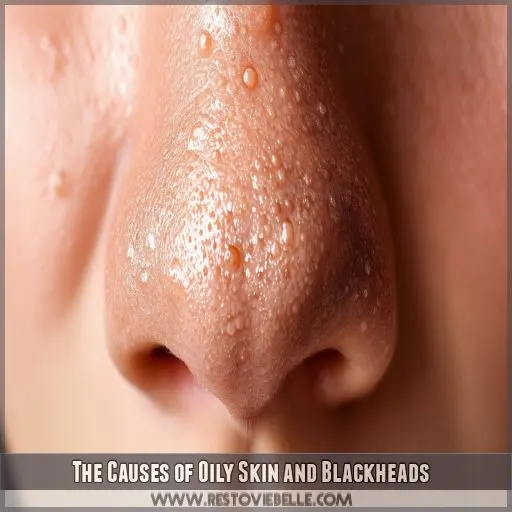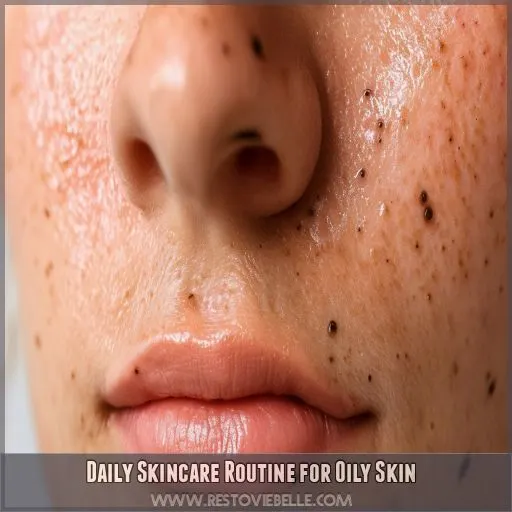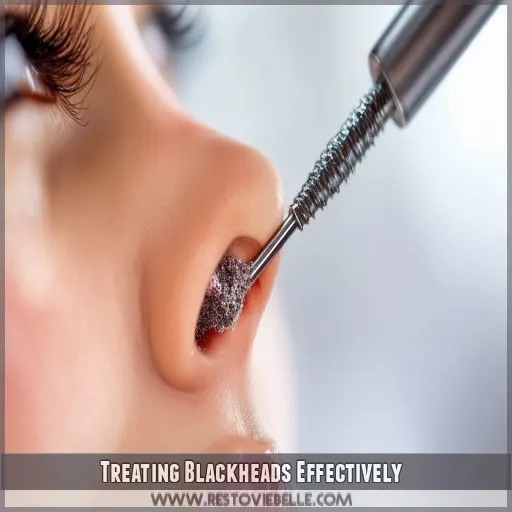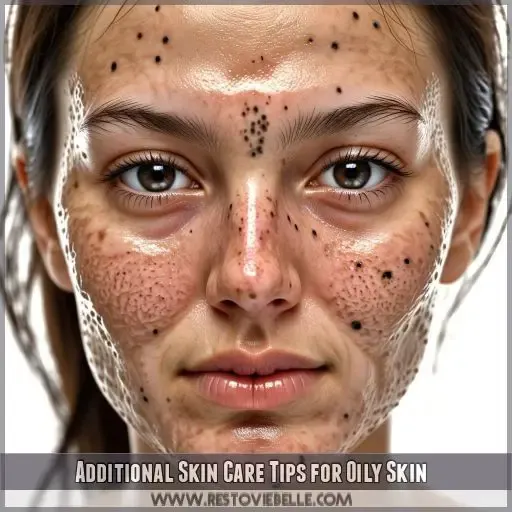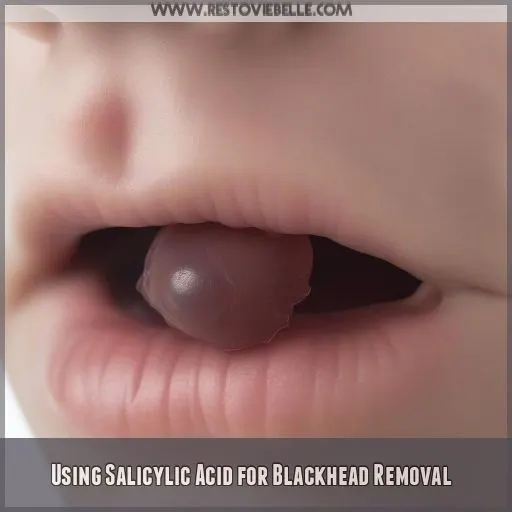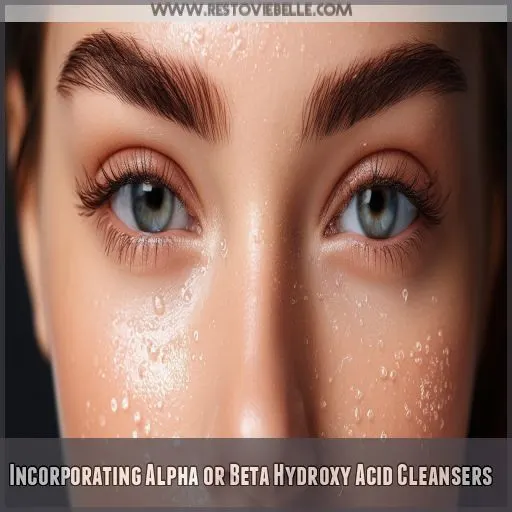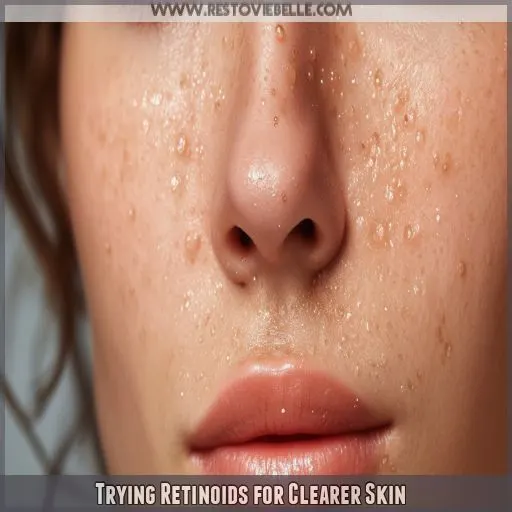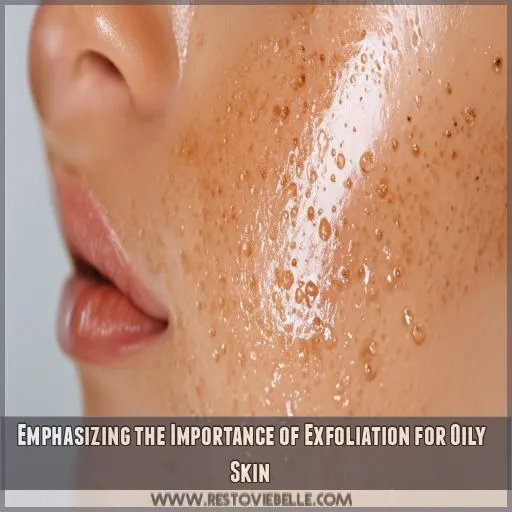This site is supported by our readers. We may earn a commission, at no cost to you, if you purchase through links.
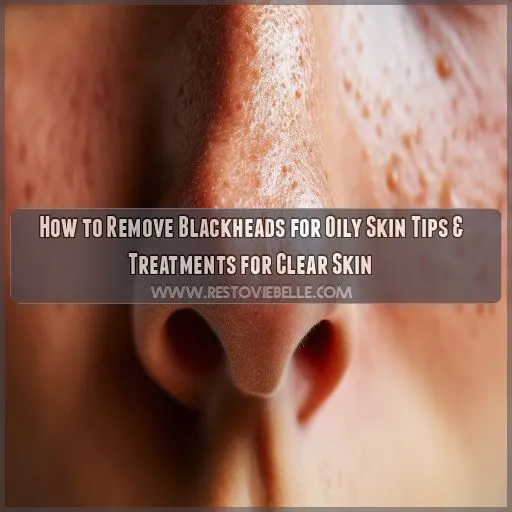
Fortunately, there are truly effective ways to approach the issue. From daily cleansing and exfoliation routines to more focused treatments, this comprehensive guide is sure to equip you with all the tips and techniques for attaining clearer and more radiant skin.
Get ready to bid blackheads adieu once and for all—embracing a shine-free complexion.
Table Of Contents
- Key Takeaways
- How to Remove Blackheads for Oily Skin?
- The Causes of Oily Skin and Blackheads
- Daily Skincare Routine for Oily Skin
- Treating Blackheads Effectively
- Additional Skin Care Tips for Oily Skin
- Using Salicylic Acid for Blackhead Removal
- Incorporating Alpha or Beta Hydroxy Acid Cleansers
- Trying Retinoids for Clearer Skin
- Emphasizing the Importance of Exfoliation for Oily Skin
- Frequently Asked Questions (FAQs)
- Conclusion
Key Takeaways
- Oily skin and blackheads? You’re not alone! We’ve got you covered with expert tips to help you achieve a clearer complexion.
- Patience is key! Don’t expect your blackheads to vanish overnight – it takes time and consistency to achieve your skincare goals.
- Salicylic acid and retinoids are your secret weapons in the battle against blackheads. These powerful ingredients unclog pores, reduce oil production, and promote clearer skin.
- Exfoliation is your friend! Gently exfoliating your skin 2-3 times per week will help remove dead skin cells and prevent pores from clogging.
How to Remove Blackheads for Oily Skin?
To get rid of blackheads on oily skin, begin with gentle cleansers containing salicylic acid—since it deeply penetrates the pores and dissolves build-up, it reduces oil.
Exfoliate regularly with alpha or beta hydroxy acids for smooth skin.
Use an oil-free, non-comedogenic moisturizer that won’t clog pores.
Add a vitamin C or E serum for antioxidants.
Use a witch hazel or salicylic acid toner to control oil.
Professional extraction by a licensed esthetician can help stubborn blackheads.
And last but not least, wear a broad spectrum SPF.
Stick to this routine, and clearer skin will start becoming yours.
Want more?
The Causes of Oily Skin and Blackheads
Hormonal imbalances, like those during puberty or pregnancy, can lead to an increase in oil production, resulting in blackheads. Genetic factors can also predispose you to oily skin and blackhead formation.
Hormonal Imbalance Impact
Hormonal imbalances are major triggers for blackheads, especially during puberty, pregnancy, or menstrual cycles. These hormonal shifts boost sebum production, leading to clogged pores and acne. Birth control and hormonal contraceptives also impact skin. Using retinoids and exfoliating products like salicylic acid can help manage these changes and keep your skin clearer.
Genetic Predisposition Influence
Genetics also play a key role in oily skin and blackheads. If your parents or grandparents had oily, acne-prone skin, you’re more likely to inherit this trait. Hormonal imbalances during puberty, pregnancy, or menopause can exacerbate the issue. Consulting a dermatologist can help identify your genetic predisposition and develop an effective skincare routine.
- Understand your genetic factors for oily skin.
- Recognize how hormones impact sebum production.
- Work with a dermatologist to manage your unique skin needs.
Sebum Overproduction Factors
Sebum overproduction in oily skin can be by various factors. Environmental triggers like pollution and humidity, diet rich in foods, and stress play roles. Lifestyle factors such as lack of sleep and poor skincare habits also contribute. Using salicylic acid, beta hydroxy acid cleansers, microdermabrasion, extraction, or pore strips can help manage sebum production.
Daily Skincare Routine for Oily Skin
For oily skin, cleansing twice daily with a cleanser and exfoliating 2-3 times per week helps remove excess oil and dead skin cells. Follow up with an oil-free, non-comedogenic moisturizer and consider adding an antioxidant serum to balance and protect your skin.
Cleansing and Exfoliating
Cleanse your face twice daily with a gentle, effective cleanser containing salicylic acid to unclog pores and control oil. Exfoliate 2-3 times per week using:
- Alpha hydroxy acid cleansers to slough off dead skin cells.
- Beta hydroxy acid products to penetrate deep and clear blackheads.
- Retinoid creams to promote new skin cell growth.
Avoid harsh scrubs that can irritate oily skin.
Choosing the Right Moisturizer
Choose an oil-free, non-comedogenic to keep your skin hydrated without clogging pores. Gel moisturizers work well for oily skin. Look for ingredients like hyaluronic acid for hydration and alpha hydroxy acid for gentle exfoliation. Proper moisturizing is key in blackhead treatment, as it balances your skin and supports manual extractions and other treatments.
Adding Antioxidant Serum
Adding an antioxidant serum to your routine can enhance your skin’s defense against damage. Here’s how to incorporate it:
- Apply after cleansing and before moisturizing.
- Choose serums with vitamin C or E for oily skin benefits.
- Use daily to boost your skin’s health and improve blackhead treatment.
These steps can help you achieve clearer, more radiant skin.
Treating Blackheads Effectively
Using a toner after cleansing can help remove excess oil and bacteria from your skin. While professional blackhead extraction by a dermatologist or esthetician can effectively clear clogged pores, patience and consistency are key when treating blackheads at home.
Using Toner for Oil Control
Toning can highly help control oil and cure blackheads. Use a toner with witch hazel or salicylic acid applied immediately after washing to tighten pores and clear off excess residue from oil.
| Benefits | Ingredients |
|---|---|
| Reduces oil | Witch hazel |
| Tightens pores | Salicylic acid |
| Refreshes skin | Tea tree oil |
| Reduces shine | Aloe vera |
Opt for alcohol-free solutions to avoid irritation.
Professional Extraction
Professional extraction, when done properly, can be very effective at removing black. Licensed estheticians operating within a controlled professional environment apply specialized extraction tools to assure safety.
- Licensed estheticians ensure safety
- Extraction tools are accurate and efficient
Professional environment minimizes risks
- Follow aftercare instructions strictly
This method calls for expertise not to damage the skin and to achieve the best results.
Patience and Consistency
Treating blackheads requires patience and consistency. Stick to a gentle daily routine using the right products. Rushing or being too aggressive can worsen the problem. With time and care, you’ll see a noticeable difference. Consistency is key – don’t give up if results aren’t immediate. Stick with it, and you’ll achieve clearer, healthier skin.
Additional Skin Care Tips for Oily Skin
Customize your skincare routine by including oil-removing oils and purifying masks with clay to minimize pores. Protect your skin from the sun to prevent excess oil production and worsening blackheads.
Customizing Your Skincare Routine
Tailor your skincare routine for oily skin by opting for non-abrasive cleansers and alcohol-free products to reduce irritation. Consistent use of these minimizes blackhead formation. Consider dietary changes, like reducing sugar intake, to improve skin health. Skin brushes and chemical peels can also help, but use them correctly to avoid worsening the condition.
Cleansing Oils and Purifying Masks
Cleansing oils can effectively remove excess oil and impurities from your pores. Look for non-comedogenic formulas that won’t clog your skin. Purifying masks with ingredients like clay or mud can help minimize the appearance of pores and draw out impurities. Use these treatments 1-2 times per week for best results.
Sun Protection
Sun protection for oily skin is a must. Reach out for sunscreens that have broad-spectrum UV protection and an SPF of 30 or higher.
Sun damage worsens your oiliness and blackheads. Not clogging your pores means you should use non-comedogenic, oil-free formulations.
Reapply after two hours and immediately after sweating or swimming to make sure the skin is well protected from the scorching rays of the sun.
Using Salicylic Acid for Blackhead Removal
Using salicylic acid for blackhead removal be a game changer in your skincare routine. This powerful ingredient breaks down dead skin cells and excess oil, unclogging pores to prevent new blackheads. When choosing salicylic acid products, look for concentrations between 0.5% to 2%, which are effective yet gentle. Keep in mind, though, potential side effects like dryness or irritation.
Here’s why salicylic acid works so well:
- Deeply penetrates pores to dissolve build-up.
- Reduces oil production, helping to control shine.
- Exfoliates the skin, promoting smoother texture.
- Has anti-inflammatory properties, calming irritated skin.
Consider alternatives if you experience severe reactions, but with patience, salicylic acid can make a noticeable difference.
Incorporating Alpha or Beta Hydroxy Acid Cleansers
Slides open the power of both alpha and beta hydroxyl acids against those frustrating blackheads. Such cleansers do their work by gently scrubbing through your skin, clearing out the pores, and reducing extra oil.
| Ingredient | Benefits |
|---|---|
| alpha hydroxy acids (AHAs) | This is to improve skin texture, lighten discolorations, and boost hydration. |
Use these powerhouse acids in your routine 1-2 times a week for that deeper cleanse that will keep your complexion free and glowing. Be sure not to forget a moisturizer afterwards to avoid dryness. Your blackhead-free skin awaits!
Trying Retinoids for Clearer Skin
- Start Slowly: Begin with a low concentration to minimize irritation.
- Apply Sparingly: Use a pea-sized amount for your entire face, once every other night.
- Moisturize: Follow up with an oil-free moisturizer to keep your skin hydrated.
- Protect Your Skin: Always apply sunscreen in the morning, as retinoids can increase sun sensitivity.
Emphasizing the Importance of Exfoliation for Oily Skin
Exfoliation is a way to get control over oily skin and prevent blackheads. When you remove these dead skin cells, you unclog the pores and help reduce too much oil. Regular exfoliating will give you smoother and clearer skin.
Try to use gentle exfoliants containing salicylic acid or alpha hydroxy acids, as these easily get inside the pores. This should be done 2-3 times per week to prevent irritation from happening. If you over-exfoliate, this will make it red and produce more oils. Other alternatives, like enzyme masks, are a bit gentler.
You should moisturize right after exfoliating to maintain balance in your skin. Remember that everything is done in moderation. Find your correct frequency and be very gentle about it, and you’ll have healthy skin with unclogged pores, not too much of the damage part. It’s by far one small step for very big skincare differences.
Frequently Asked Questions (FAQs)
Can diet affect the formation of black?
A diet high in sugary foods can lead to blackhead formation. For instance, John noticed fewer blackheads after reducing his sugar intake, as high sugar levels can trigger excess oil production, worsening blackheads.
Are there any home remedies for blackheads?
Try a homemade blackhead-busting baking soda scrub or an apple cider vinegar toner. These natural remedies can help unclog pores and minimize the appearance of blackheads on oily skin. Just be gentle and consistent for best results.
What professional treatments are available for blackheads?
Imagine Sarah’s confidence after successfully treating her black: Professional treatments for blackheads include chemical peels, microdermabrasion, laser therapy, extractions, and antibiotics.Consult a dermatologist to determine the best option for your skin type.
How often should I change my pillowcases?
Change your pillowcases at least twice a week This helps prevent oil, bacteria, and dead skin cells from accumulating on your pillow, which can lead to more blackheads and acne. Consistent cleanliness supports clearer skin.
Can stress contribute to blackhead development?
Stress can certainly stoke the flames of blackhead formation, as anxiety triggers excess oil production and clogs pores. Manage stress through relaxation techniques to extinguish this pesky skin issue at its source.
Conclusion
Are you ready to fight oily skin and blackheads?
Now, by using these effective strategies through the ultimate guide on how to remove blackheads for oily skin, you’ll be able to have clearer and radiant skin. Just master a perfect daily skincare routine and then incorporate treatments like salicylic acid and retinoids into it—nearly completely clear shine-free complexion.
Of course, you’ll need patience and consistency. Stick to these tips, and watch your skin change bit by bit.

